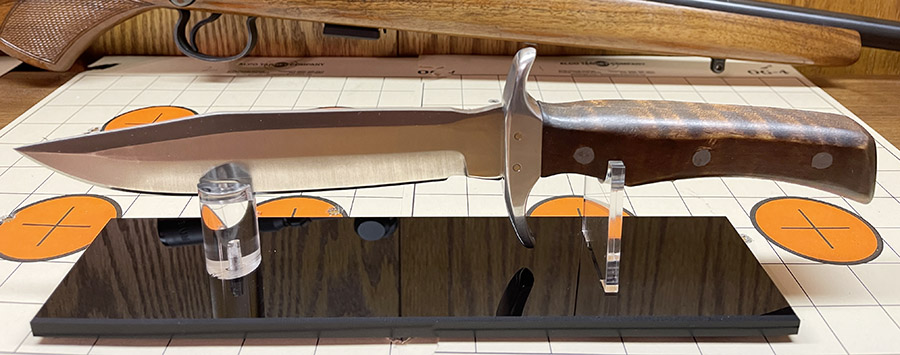By Joe Berk
It’s good to have friends, and it’s even better to have friends that go back to your earlier childhood. I have a few of those, and the one I’ve known the longest is good buddy Paul. We were next door neighbors back there in rural New Jersey from the time we were babies. Our dads hunted, fished, and shot trap and skeet together when we were little. They were friends and it was natural that Paul and I were friends. We fished, explored the area’s woodlands, lakes, streams, and ponds, and generally got into all kinds of trouble together. In other words, we had fun, and that continues to this day.
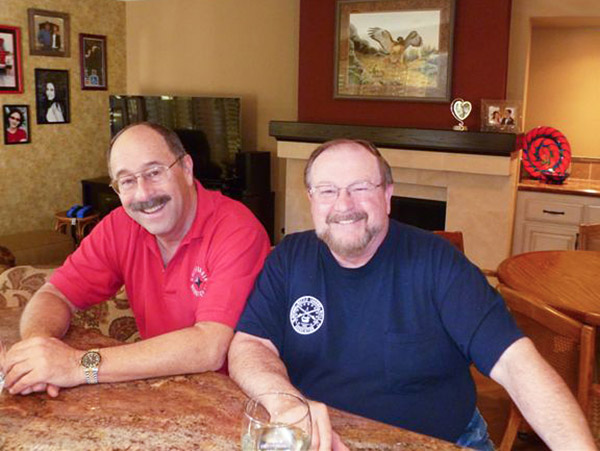
You have read some of my posts on my latest obsession: Pocket knives. Paul is what you’d call an enabler. He has an extensive collection of both pocket knives and fixed blade knives, including some that are absolute masterpieces. Paul is a craftsman, and he’s fabricated several fixed blade knives. He recently made one for me, and it’s become the touchstone piece of my modest knife collection.
Bowie Knife History
First, a bit of background on what a Bowie knife is. The term has come to denote a large fixed-blade knife with a handle, a guard (the piece between the handle and the blade), and the blade. Jim Bowie is the stuff of legends, a frontiersman in the early 19th century, a hero of the Texas Revolution, and a fighter who died at the Alamo. Although we don’t know with certainty, the Bowie knife design is generally credited to Jim Bowie, his brother, Rezin Bowie, and blacksmith Jesse Clifft. Legend has it that Rezin designed the a knife, with inputs from Jim, and Clifft crafted it from an old file (custom/hobby knifemakers sometimes similarly make knives from old files today).
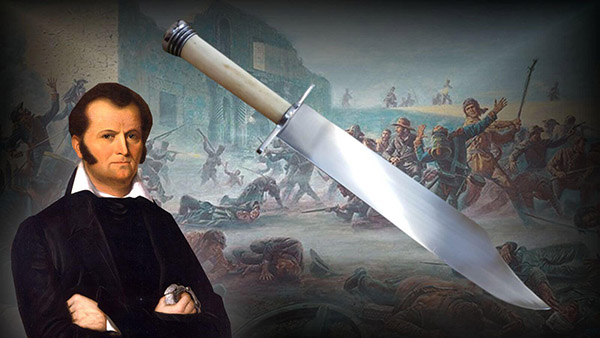
Jim Bowie used the knife in the 1827 Sandbar Duel, where he used the knife to injure an enemy in a fight. The Bowie knife concept spread, and the term planted itself in our national lexicon. The knife became a frontier tool, equally adept in combat, in skinning and butchering animals, and as a general cutting and chopping tool. It has been carried and used by soldiers to this day; indeed, one could argue that the famed Marine Corps KaBar knife is a direct descendant of the Bowie. Numerous custom knifemakers offer various interpretations and takes on the Bowie concept, including famed knifemaker Randall Knives. William Westmoreland, whom I met once when I was in the Army, carried a Randall. Paul owns several Randalls and he’s trying to convince me I need one. So far, I’ve been able to resist taking that plunge.
My Custom Bowie Knife
During a recent phone conversation with Paul, he mentioned that we was working on a new project. When I asked what it was, Paul told me I’d find out soon enough. And I did, when a package arrived at my front door with the Bowie knife you see in the photo on the top of this blog. It’s awesome. Paul also sent along photos showing a few of the steps involved with his making this knife.
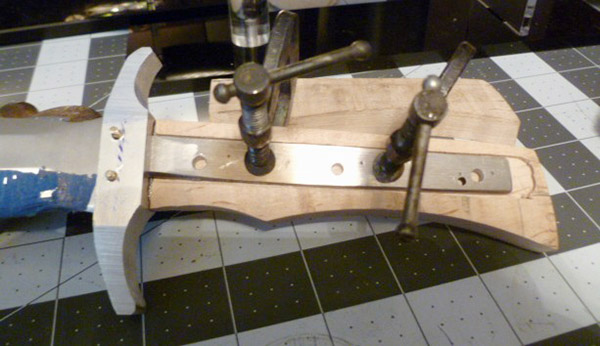
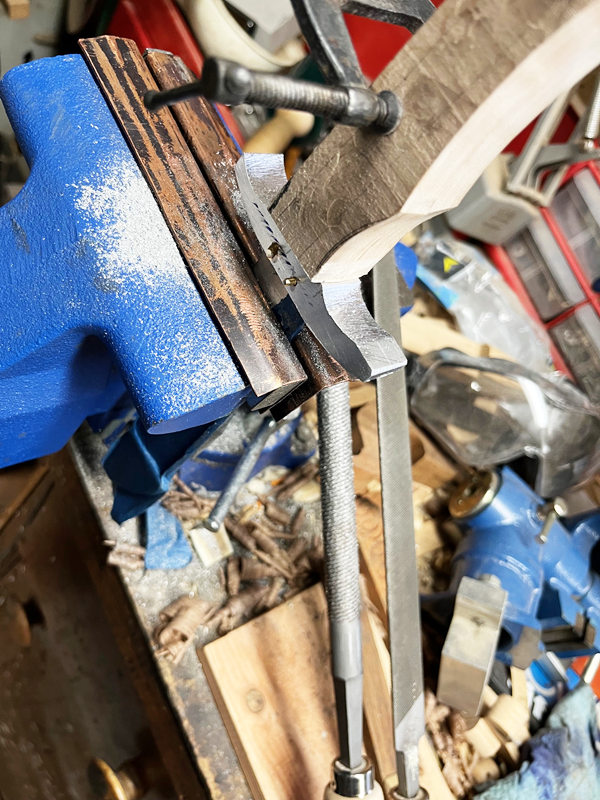
The knife’s handle is curly maple finished with nitric acid and one coat of TruOil. Paul has built a number of custom black powder rifles with curly maple, using nitric acid as the finishing agent. It’s not something for amateurs, as it requires special handling. Nitric acid causes the wood to darken, which brings out the figure in a piece of curly maple (as it did on my Bowie knife).
Here’s close up of Bowie’s blade:
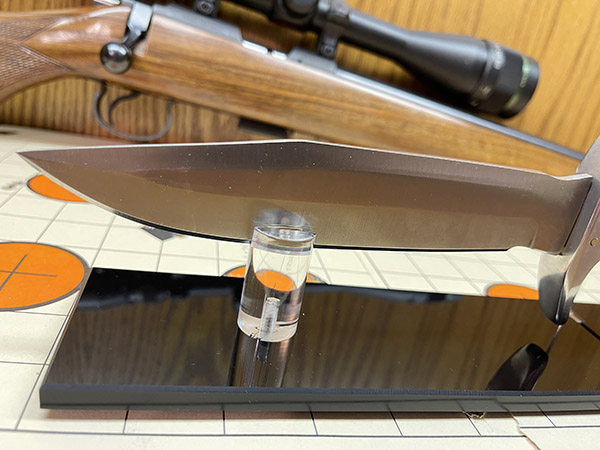
Here’s a photo of the guard and the handle. Check out the figure in the curly maple.
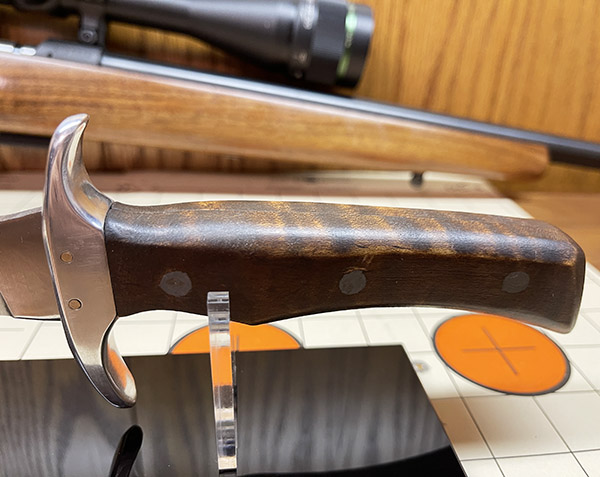
Here’s the finished knife, on top of a background I’ve used for many photos appearing here on ExhaustNotes.
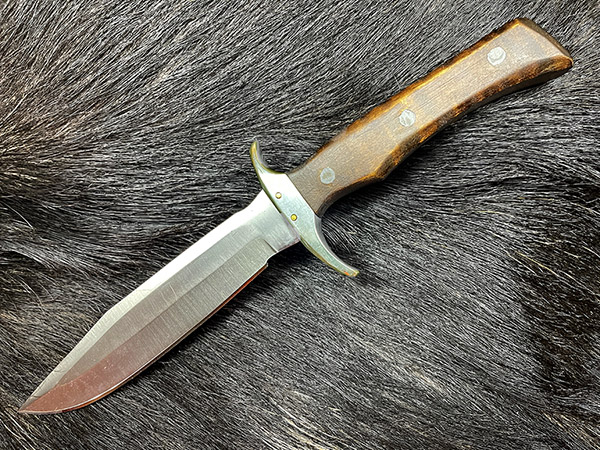
This Bowie knife is a cool gift and a prized possession. Thanks much, Paul!
Join our Facebook ExNotes page!
Never miss an ExNotes blog:

